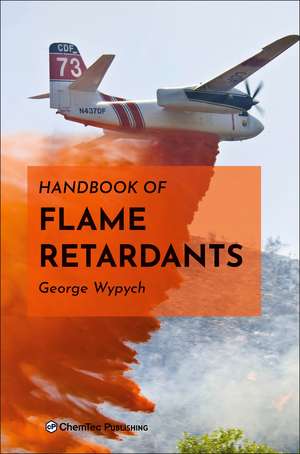Handbook of Flame Retardants
Autor George Wypychen Limba Engleză Hardback – 28 ian 2021
The book concludes with chapters providing guidance on optimal selection of flame retardants for various polymers and information on the toxicity of flame retardants and their effects on the environment.
- Evaluates the existing literature, products and patents related to flame retardance
- Covers the fundamentals of material burning and associated stages of heat, flame and smoke
- Outlines and evaluates the properties of 27 chemical groups of flame retardants
- Provides examples of synergistic and antagonistic actions of various additives
- Looks at methods of testing flame retardants and quantifies their effect on products
Preț: 1614.10 lei
Preț vechi: 2096.24 lei
-23% Nou
Puncte Express: 2421
Preț estimativ în valută:
308.85€ • 322.47$ • 255.62£
308.85€ • 322.47$ • 255.62£
Carte tipărită la comandă
Livrare economică 04-18 aprilie
Preluare comenzi: 021 569.72.76
Specificații
ISBN-13: 9781927885697
ISBN-10: 1927885698
Pagini: 260
Ilustrații: Approx. 500 illustrations
Dimensiuni: 152 x 229 mm
Greutate: 0.54 kg
Editura: ELSEVIER SCIENCE
ISBN-10: 1927885698
Pagini: 260
Ilustrații: Approx. 500 illustrations
Dimensiuni: 152 x 229 mm
Greutate: 0.54 kg
Editura: ELSEVIER SCIENCE
Public țintă
Researchers in materials science and engineering (chemical; mechanical); professional material scientists and engineersCuprins
1. Introduction
2. Fire ignition and spread
3. Combustion, pyrolysis, and smoke and char formation
4. Typical groups of flame retardants and intumescent additives
5. Mechanisms of action of flame retardants
6. Selection of flame retardants for different polymers
2. Fire ignition and spread
3. Combustion, pyrolysis, and smoke and char formation
4. Typical groups of flame retardants and intumescent additives
5. Mechanisms of action of flame retardants
6. Selection of flame retardants for different polymers
